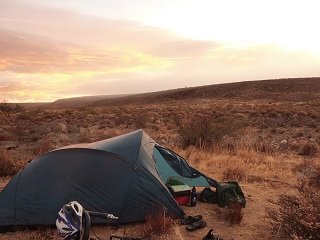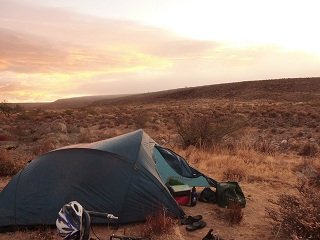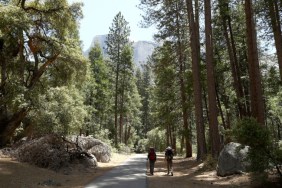 Not every square mile of the United States is comprised of lush, green forests or looming mountain ranges. Head far enough towards the country’s southwestern corner and you’ll undoubtedly find yourself in the desert with the sun beating down on you. There are some outdoorsmen, however, who enjoy venturing out into the vast expanses of sand and rock for a few nights away from civilization. Camping in the desert is no picnic, however, and you’ll need to stay sharp and focused to protect yourself from the elements, especially if you’ve never done it before.
Not every square mile of the United States is comprised of lush, green forests or looming mountain ranges. Head far enough towards the country’s southwestern corner and you’ll undoubtedly find yourself in the desert with the sun beating down on you. There are some outdoorsmen, however, who enjoy venturing out into the vast expanses of sand and rock for a few nights away from civilization. Camping in the desert is no picnic, however, and you’ll need to stay sharp and focused to protect yourself from the elements, especially if you’ve never done it before.
Obviously, water is a vital element of any camping or hiking trip, but in the desert, it’s exponentially more important. Because the majority of deserts lack any humidity, you’ll consume much more water than normal (at least 4 liters a day). To prepare yourself, bring as much water as you can carry, and if you’re heading far from the beaten path, bring more. Always know where the nearest source of water is found and make sure you have a way to contact someone in case of an emergency. Drink constantly throughout the day and avoid getting thirsty; thirst means you’re already dehydrated. Also, if you can, limit your activities to the early morning or late evening hours, when the heat is more tolerable.
On the flip side, you’ll also need to prepare for the harsh temperatures of desert nights. The lack of humidity means nights in the desert can drop below zero at times, so I suggest bringing some warm clothing, and perhaps an extra blanket or flannel sheet.
It’s important to remember that we are visitors to the outdoors and the animals who call the wilderness their home. While the vast majority of animals do their best to avoid humans, some of them can be dangerous, even fatal, when provoked or stumbled upon. Deserts are home to venomous spiders and snakes, as well as scorpions and even mountain lions, so it’s important to watch where you place your hands and feet. Try not to stick your hands into any holes and be sure to shake out your boots before putting them on in the morning.
Lastly, your tent, normally a safe place to seek shelter, can become an oven in the desert sun. Most are equipped with light, thin roof that sunlight easily penetrates, heating the floor and essentially raising the tent’s interior temperature drastically. Try to pitch your tent in the shade if you can, and if you can’t, pack an opaque tarp to block out the sun. Also, keep your flaps open to ventilate the inside and move any heat-sensitive items outside if you’ll be at camp for a while.
Spending an extended period of time in the desert is about slowing yourself down and falling into a harmony with the way the desert works, and isn’t as bad as some may initially believe. Once you get used to the heat, the desert offers a great retreat from everyday life that any camper will enjoy. Like any camping trip, being prepared for the trek is the first step, so leave no stone unturned during your planning for a trip to the desert.








